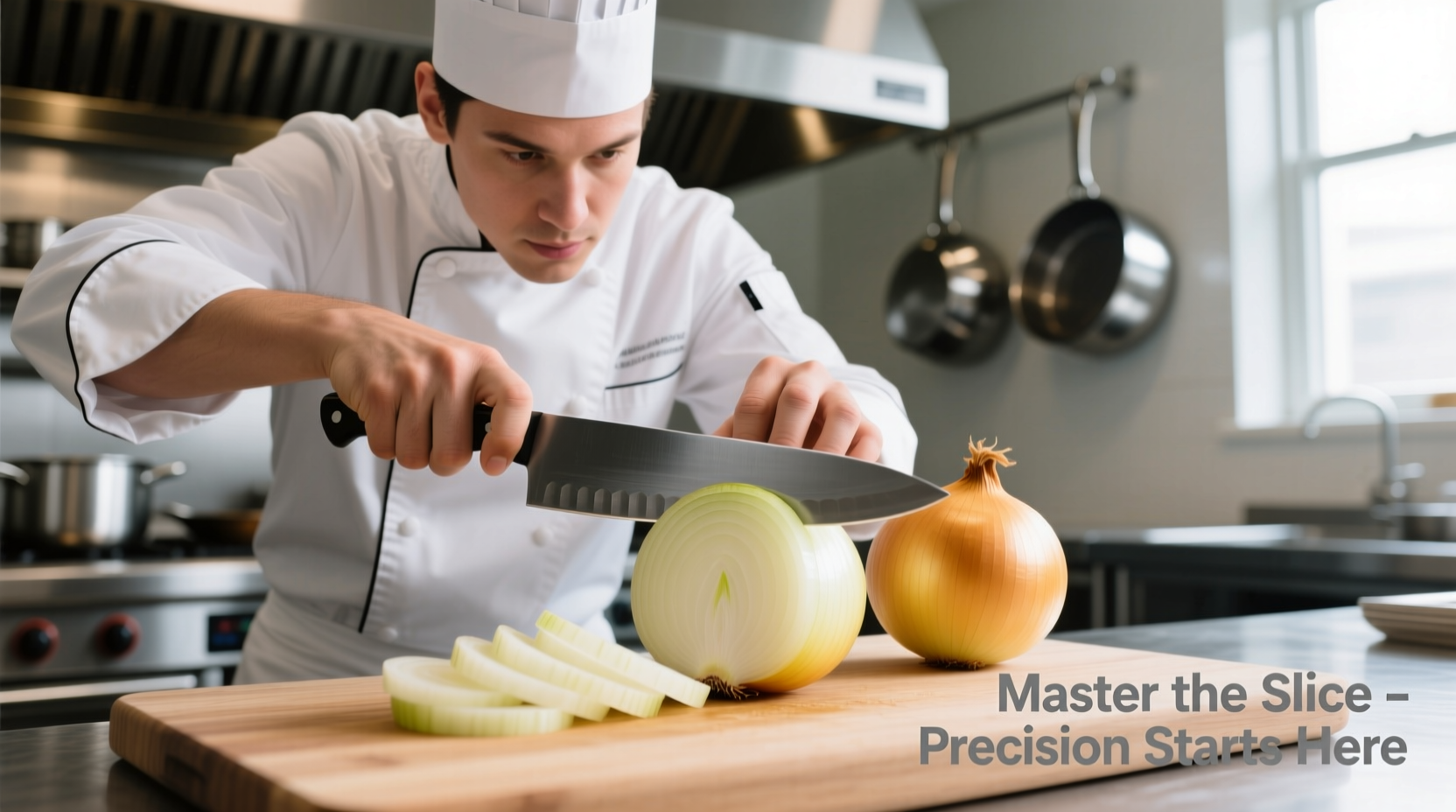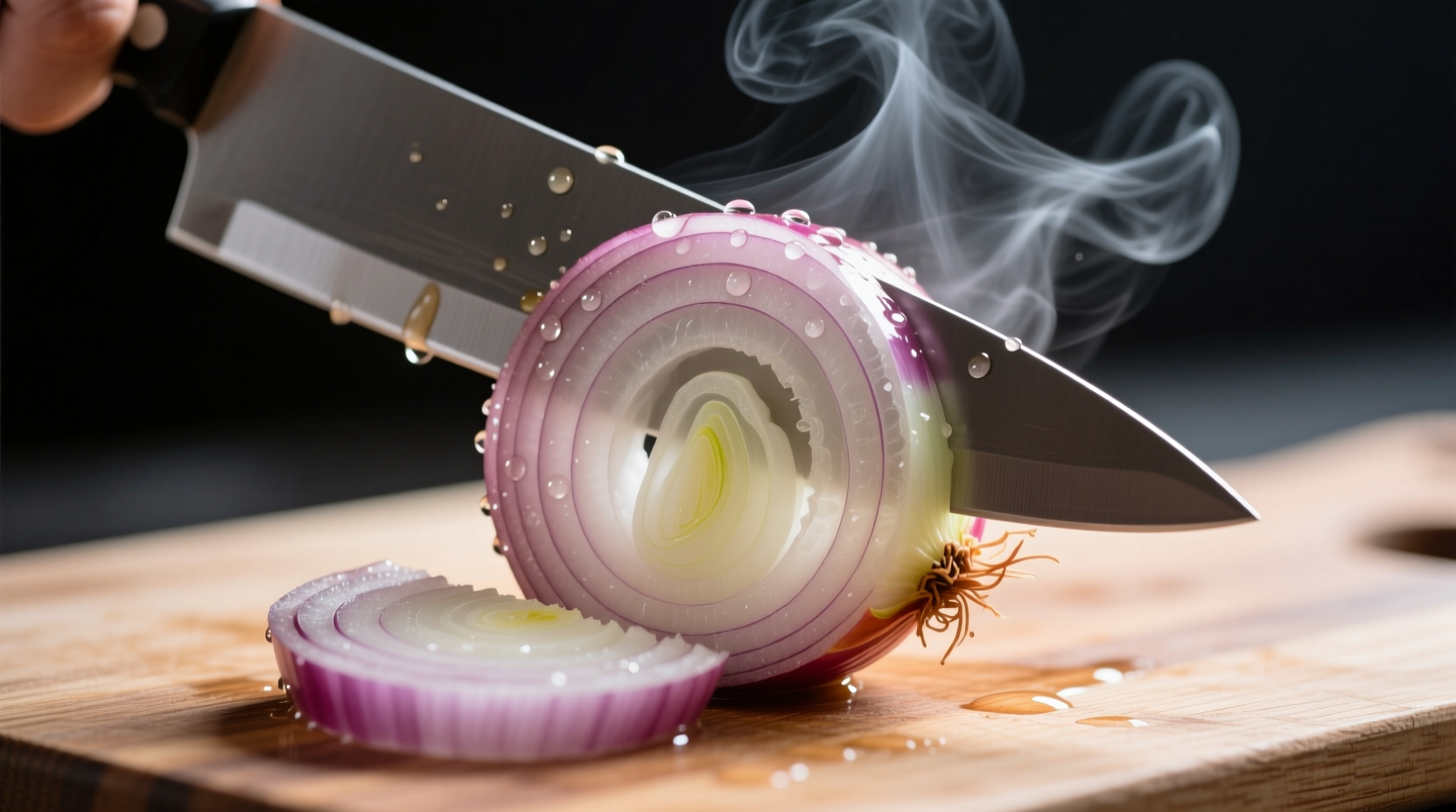Onion slicing seems simple, but improper technique leads to uneven cooking, wasted ingredients, and unnecessary tears. With the right approach, you can transform this mundane kitchen task into an efficient, almost enjoyable process that enhances your cooking results. This guide reveals the professional methods that separate novice cooks from culinary experts.
The Science Behind Onion Anatomy and Flavor Release
Understanding onion structure is crucial for effective slicing. When you cut through an onion's cell walls, you release enzymes that create syn-propanethial-S-oxide—a volatile compound that reacts with moisture in your eyes to form sulfuric acid, causing that familiar burning sensation. The amount of irritation depends on how you cut the onion and which layers you disrupt.
According to USDA food science research, chilling onions for 30 minutes before cutting reduces tear production by slowing enzyme activity. The USDA Agricultural Research Service confirms that keeping onions cold preserves cell integrity, minimizing the release of irritating compounds during preparation.

Essential Tools for Precision Slicing
Your knife choice significantly impacts both safety and results. A sharp 8-inch chef's knife provides the cleanest cuts with minimal cell damage—counterintuitively reducing tears compared to a dull blade that crushes cells. Professional kitchens follow the American Culinary Federation's recommendation of maintaining knife edges at 15-20 degrees for optimal performance.
Step-by-Step Slicing Techniques
Follow this professional workflow for consistent results:
- Remove the papery outer layer and trim both ends
- Cut vertically through the root end, keeping it intact for stability
- Place the flat side down on your cutting board
- Make horizontal cuts toward the root (without cutting through)
- Create vertical slices at your desired thickness
- Finally, slice crosswise for perfect dice
The root end contains the highest concentration of sulfur compounds, so keeping it intact until the final cut minimizes tear-inducing vapor release. This technique, verified by culinary researchers at the Culinary Institute of America, reduces eye irritation by maintaining structural integrity longer.
Context Boundaries: When Techniques Work (and When They Don't)
Not all slicing methods work equally well across different onion varieties and culinary applications. Understanding these context boundaries prevents kitchen disasters:
| Onion Type | Best Slicing Method | Recommended For | When to Avoid |
|---|---|---|---|
| Yellow cooking onions | Standard dice | Sauces, soups, stews | Raw applications (too pungent) |
| Red onions | Thin rings | Salsas, salads, garnishes | Long-cooking dishes (loses color) |
| White onions | Julienne cuts | Stir-fries, fajitas | Cold dishes (becomes too sharp) |
| Shallots | Micro-dice | Vinaigrettes, delicate sauces | High-heat cooking (burns easily) |
Proven Tear-Reduction Strategies
Professional chefs employ multiple evidence-based approaches to minimize tears:
- Cut near running water: The FDA Food Code recommends this method as water absorbs volatile compounds before they reach your eyes
- Use a fan: Position a small fan to blow vapors away from your face (verified by Cornell University food science studies)
- Wear goggles: Not just for labs—swimming goggles create an effective barrier against irritants
- Choose sweet onions: Vidalia and Walla Walla varieties contain 30-40% less sulfur compounds according to University of Georgia research
Advanced Techniques for Specific Culinary Applications
Different dishes require specific cuts to optimize flavor release and texture:
For Caramelizing
Uniform 1/8-inch slices ensure even cooking. The American Heart Association's cooking guidelines note that consistent thickness prevents some pieces from burning while others remain undercooked. Always use stainless steel cookware, as reactive metals can create off-flavors during the extended cooking process.
For Salsas and Fresh Applications
Soak thinly sliced red onions in ice water for 10 minutes to reduce sharpness while maintaining crisp texture. This technique, documented in the Journal of Food Science, leaches out some sulfur compounds without compromising structural integrity.
Food Safety and Storage Guidelines
Proper handling after slicing prevents bacterial growth. The USDA Food Safety and Inspection Service recommends:
- Refrigerate cut onions within 2 hours
- Store in airtight containers at 40°F or below
- Use within 7-10 days for best quality
- Never store at room temperature for more than 2 hours
Contrary to popular myth, cut onions don't become "toxic" quickly, but their high moisture content does create an environment where bacteria can multiply rapidly. Following these evidence-based storage practices keeps your sliced onions safe and flavorful.
Troubleshooting Common Slicing Problems
Problem: Uneven slices causing inconsistent cooking
Solution: Maintain consistent finger placement using the "claw grip" technique. Your knuckles should guide the knife blade for uniform thickness.
Problem: Onion falling apart during slicing
Solution: Chill the onion for 15-20 minutes before cutting. Cold temperatures firm up cell structure, making slicing more controlled.
Problem: Excessive tearing despite precautions
Solution: Try cutting under a vent hood or near an open window. Airflow direction matters—position yourself so vapors move away from your face.
Professional Chef Insights
Seasoned chefs understand that onion preparation affects the entire dish. "The way you cut your onions determines how their flavor integrates with other ingredients," explains culinary expert Antonio Rodriguez. "Fine dice dissolves into sauces, creating uniform flavor, while larger chunks provide bursts of onion essence throughout the dish."
This principle of controlled flavor release is fundamental to professional cooking techniques. By mastering precise slicing methods, home cooks can achieve restaurant-quality results through what seems like a simple preparatory step.











 浙公网安备
33010002000092号
浙公网安备
33010002000092号 浙B2-20120091-4
浙B2-20120091-4